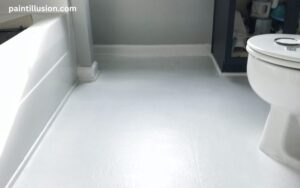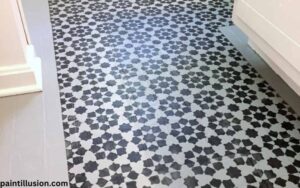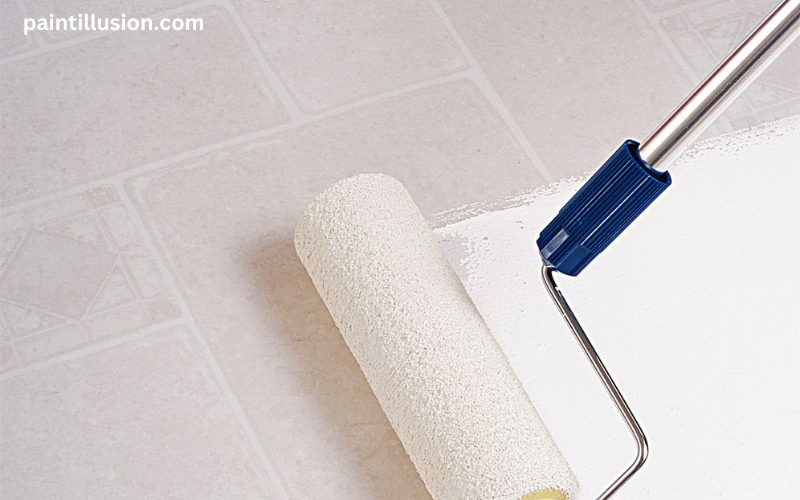Paint vinyl flooring is a popular choice for many homeowners due to its durability and affordability. However, over time, the color or design of vinyl flooring may become outdated or worn out. If you’re looking to give your vinyl flooring a fresh new look, you might be wondering if it’s possible to paint it. In this article, we will explore the advantages and disadvantages of painting vinyl flooring, as well as provide you with a step-by-step guide on how to paint your vinyl flooring successfully.
Advantages and disadvantages of painting vinyl flooring
Painting your vinyl flooring can be a cost-effective way to update the look of your space without having to replace the entire floor. It allows you to customize the color and design to match your personal style and home decor. Additionally, painting vinyl flooring can help to extend the lifespan of your floor by providing an extra layer of protection against scratches and wear.
However, it’s important to note that there are some disadvantages to painting vinyl flooring. First and foremost, painting your vinyl flooring may void any existing warranty. It’s crucial to check with the manufacturer or retailer before proceeding with painting. Additionally, the painted surface may require more frequent maintenance and touch-ups compared to the original vinyl flooring. Painted vinyl flooring may also be more prone to chipping or peeling, especially in high-traffic areas.

Preparing the vinyl flooring for painting
Before you start painting your vinyl flooring, it’s essential to properly prepare the surface to ensure the paint adheres well and lasts longer. Here are the steps you should follow:
- Clean the floor: Thoroughly sweep or vacuum the vinyl flooring to remove any dust, dirt, or debris. Then, use a mild detergent mixed with warm water to mop the floor and remove any stains or grime. Rinse the floor with clean water and allow it to dry completely.
- Sand the surface: Lightly sand the vinyl flooring to create a rough texture that will help the paint adhere better. Use a fine-grit sandpaper and sand in a circular motion. Be careful not to sand too aggressively, as it may damage the vinyl.
- Repair any damages: Inspect the vinyl flooring for any damages, such as cracks or holes. Fill them with a vinyl floor filler and allow it to dry according to the manufacturer’s instructions. Once dry, sand the filled areas to create a smooth surface.
- Prime the floor: Apply a coat of primer specifically designed for vinyl surfaces. Use a paint roller or brush to evenly distribute the primer. Allow the primer to dry completely before moving on to the next step.
Choosing the right paint for vinyl flooring
Choosing the right paint for your vinyl flooring is crucial to achieve a long-lasting and beautiful finish. Here are a few factors to consider when selecting the paint:
- Type of paint: Opt for an acrylic or latex paint that is suitable for use on floors. These types of paint are flexible and durable, making them ideal for vinyl flooring. Avoid using oil-based paints, as they may not adhere well to the vinyl surface.
- Finish: Decide on the finish you prefer, such as matte, satin, or gloss. Keep in mind that a gloss finish may show more imperfections and scratches over time, while a matte finish may be more forgiving.
- Color: Choose a color that complements your overall design scheme and personal preference. Consider the lighting in the room and how the color will look against the other elements in the space.
- Sample testing: Before painting the entire floor, it’s a good idea to test the paint on a small, inconspicuous area of the vinyl flooring. This will allow you to assess the color, finish, and adhesion of the paint before committing to the entire project.
Once you’ve selected the right paint, it’s time to move on to the next step – painting your vinyl flooring.

Step-by-step guide to painting vinyl flooring
- Prepare the paint: Stir the paint thoroughly to ensure an even consistency. If needed, thin the paint according to the manufacturer’s instructions.
- Apply the first coat: Start by cutting in around the edges of the room using a paintbrush. Then, use a paint roller to apply the first coat of paint to the rest of the floor. Work in small sections, overlapping each stroke to avoid visible lines or streaks. Allow the first coat to dry completely before applying the second coat.
- Apply the second coat: Once the first coat is dry, repeat the process with a second coat of paint. This will help to achieve a more opaque and uniform finish. Again, allow the second coat to dry completely before moving any furniture back onto the floor.
- Seal the painted surface: To protect the painted vinyl flooring and enhance its durability, apply a clear polyurethane sealer. Use a paintbrush or roller to evenly coat the floor with the sealer. Allow it to dry according to the manufacturer’s instructions before using the floor.
Tips and tricks for a successful paint job
To ensure a successful paint job on your vinyl flooring, here are some additional tips and tricks to keep in mind:
- Ventilation: Open windows or use fans to ensure proper ventilation during the painting process. This will help to dissipate fumes and allow the paint to dry faster.
- Temperature and humidity: Paint in a room with a temperature of around 70 degrees Fahrenheit and a humidity level of 50% or less. Extreme temperatures or high humidity can affect the drying time and adhesion of the paint.
- Avoid heavy furniture: To prevent any damage to the freshly painted vinyl flooring, avoid placing heavy furniture or appliances on it for at least 48 hours after the final coat of paint has dried.
- Regular maintenance: To keep your painted vinyl flooring looking its best, clean it regularly with a mild detergent and a soft mop or cloth. Avoid using abrasive cleaners or scrub brushes, as they may damage the painted surface.
By following these tips and tricks, you can achieve a successful paint job on your vinyl flooring and enjoy a fresh new look in your space.
Maintaining and cleaning painted vinyl flooring
To maintain the beauty and longevity of your painted vinyl flooring, it’s important to follow proper cleaning and maintenance practices. Here are some guidelines to keep in mind:
- Regular cleaning: Sweep or vacuum the floor regularly to remove any dirt or debris. This will prevent scratches and keep the surface looking clean.
- Gentle cleaning: For routine cleaning, damp mop the floor with a mild detergent mixed with water. Avoid using abrasive cleaners or scrub brushes, as they may damage the painted surface.
- Stain removal: If you encounter any stains on your painted vinyl flooring, address them promptly. Use a non-abrasive cleaner or a mixture of baking soda and water to gently scrub the stain. Rinse the area with clean water and dry it thoroughly.
- Avoid excessive moisture: Vinyl flooring is not completely waterproof, so it’s important to avoid excessive moisture. Clean up spills immediately to prevent water from seeping into the painted surface and causing damage.
By following these maintenance practices, you can ensure that your painted vinyl flooring stays looking its best for years to come.
Alternative options to painting vinyl flooring
If you’re hesitant about painting your vinyl flooring or it’s not a suitable option for your needs, there are alternative options you can consider to update the look of your floor:
- Vinyl flooring stickers: Vinyl flooring stickers are a quick and easy way to transform the look of your floor without the need for paint. They come in a variety of designs and patterns, allowing you to customize your space.
- Vinyl plank flooring: If you’re looking for a more permanent solution, consider installing vinyl plank flooring over your existing vinyl floor. Vinyl plank flooring is available in a wide range of styles and colors, and it provides a durable and waterproof surface.
- Area rugs: Another option is to cover your vinyl flooring with area rugs. This allows you to add color and texture to your space without making any permanent changes to the floor.
Consider these alternatives if painting your vinyl flooring is not the right choice for you.
Frequently asked questions about painting vinyl flooring
- Is it necessary to sand the vinyl flooring before painting? Yes, sanding the vinyl flooring helps to create a rough texture that allows the paint to adhere better. However, be careful not to sand too aggressively, as it may damage the vinyl.
- Can I paint vinyl flooring in a high-traffic area? While it is possible to paint vinyl flooring in a high-traffic area, keep in mind that painted surfaces may be more prone to chipping or peeling. Consider using a clear polyurethane sealer to enhance the durability of the paint.
- How long does painted vinyl flooring last? The lifespan of painted vinyl flooring depends on various factors, such as the quality of the paint, the amount of foot traffic, and the maintenance practices. With proper care, painted vinyl flooring can last several years.
- Can I repaint my vinyl flooring if I want to change the color? Yes, you can repaint your vinyl flooring if you want to change the color. However, it’s important to properly prepare the surface and follow the steps outlined in this article.
Conclusion
Painting vinyl flooring can be a rewarding DIY project that allows you to update the look of your space without breaking the bank. By following the steps and tips outlined in this article, you can achieve a successful paint job and enjoy a fresh new look in your home. Remember to properly prepare the surface, choose the right paint, and follow proper maintenance practices to ensure the longevity of your painted vinyl flooring. If painting is not the right option for you, consider the alternative options mentioned. With a little creativity, you can transform your vinyl flooring into a beautiful and personalized space.


You can certainly see your enthusiasm within the paintings you write. The arena hopes for even more passionate writers such as you who aren’t afraid to say how they believe. Always go after your heart. “There are only two industries that refer to their customers as users.” by Edward Tufte.